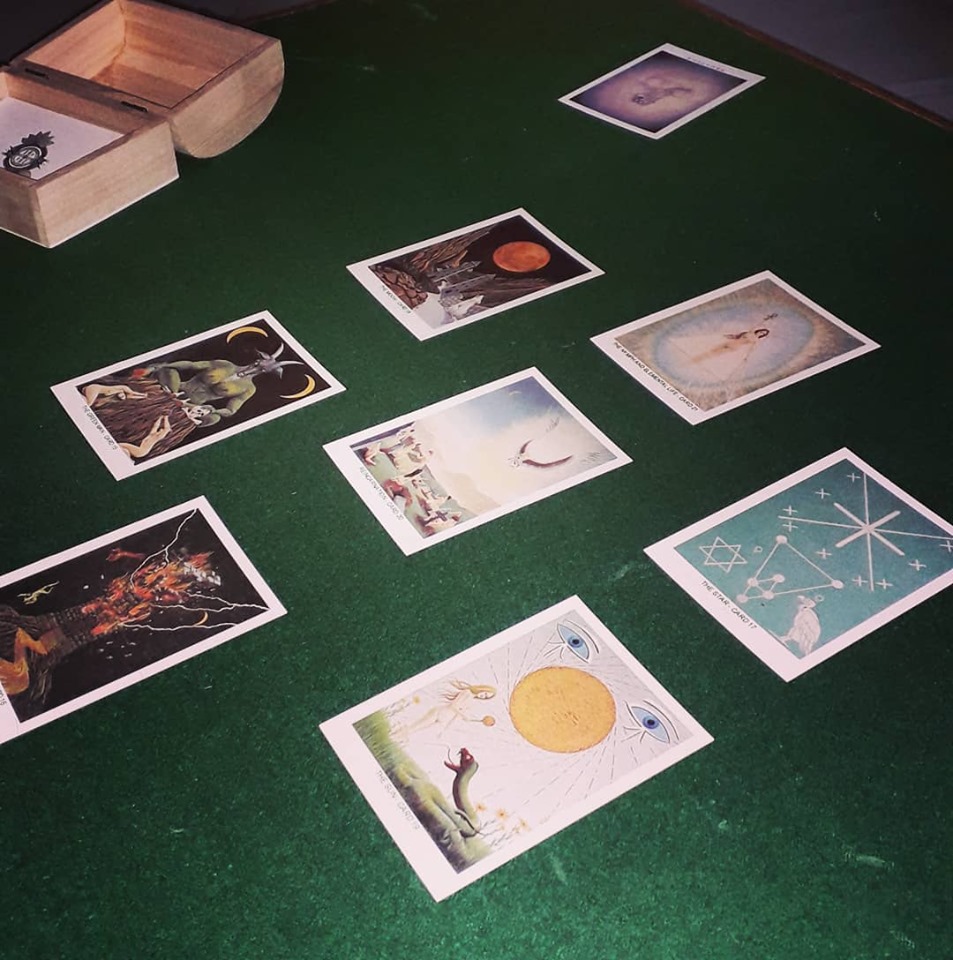The Tarot card has had a place in the history of the human race for many thousands of years, albeit that it wasn’t always called the Tarot. In other cultures through history there was always a presence of something divinatory, calling for some kind of divination required for answers and more. The event of the human has itself a nature which is always looking, searching and seeking for the truth of things; sometimes it is easy and sometimes not, either way when one cannot find the answer then another maybe able to do so, even on another’s behalf. To these are given names, diviner, caster, seer and more to foretell, decipher, interpret and define event (even if it hasn’t happened yet) and use their skills to do as asked. As civilisation has troubled its journey with the changes made or happened upon them, they have hidden and retreated from such practices as divination and then in time changed back, repeating themselves as each successive generation develops its own culture of civilisation. This repetition of hidden, not hidden, then hidden etc, if keeping the old knowledge and practice is involved, is all well and good, but not if it is lost.
So, what is the Tarot?
Sometimes new culture or event has or had within it something of that which was hidden before, then the art of it evolves (albeit haphazardly), and it is left to the learning and skills of the diviners to bring out the truths and practices that belonged to the past or remake them in the idea of the culture they have become. Therefore, the divinatory worlds of which the Tarot is one of a practice, is a living world that changes with the time and tides of natural and cultural life.
It is little understood that there isn’t just a single life; life is made of many things, seen and unseen and if a divination system or art is to work correctly it should be able to reflect both of those worlds in equal appeal or practice. The Tarot is a way to enter into and interpret such worlds and to see the effect or shadow that it can cast upon an unknown or unknowing event of life, concerned over by the person petitioning the practitioner to perform.
It is little understood that there isn’t just a single life; life is made of many things, seen and unseen and if a divination system or art is to work correctly it should be able to reflect both of those worlds in equal appeal or practice. The Tarot is a way to enter into and interpret such worlds and to see the effect or shadow that it can cast upon an unknown or unknowing event of life, concerned over by the person petitioning the practitioner to perform.

The cards themselves are of no power, they are just cards, but they are something else in the hands of the practitioner or master that handles them. They can be used to enter domains once forbidden such as the unseen worlds of influence and power, the natural and elemental worlds, the astral and ethereal domains and their connections to the higher or even ordinary lives of culture and, by interpretation, make aware or known the meanings of such things and the influence they have over; someone’s life or events of life for example.
They are also used to predict outcome, from a story or enquiry, even a secret one (the answers supposedly allowing clear sight in front of the event and so on). To a diviner, a tarot pack is an app used for calling on another frequency of life and is almost as important as mobile phones are to others. Today there are thousands of tarot packs, large and small, different and standard, from beginners to advanced, to very old and very new, from exoteric to religious and even occult.
A huge variety all trying to say or offering another version of the same truths that humanity has been looking for, learning and re-learning many times over, during its incredibly long history. Today’s most popular form of tarot is a standard 78 cards, consisting of 21 major arcana, and a supplicant minor arcana deck of 56 cards, sometimes based on pictures and well defined symbols or words that have meaning in the living event of life, rather than or as well as the occult, esoteric, secret or even hidden side of life.
There is no real format of any tarot other than by the divination it is made of and the divination it is to practise. Thus, it isn’t always the case that 78 cards is right or wrong or even only 21 (as is the case for this tarot pack at this moment); it depends upon the reader or the designer or maker and their own skills in using a small or large pack. One can always add a normal set of playing cards and read from a numerological standpoint on the minor event of a reading.
READ MORE >>> The Tarot of Virsel
READ MORE >>>> The history of The Frownstrong Tarot